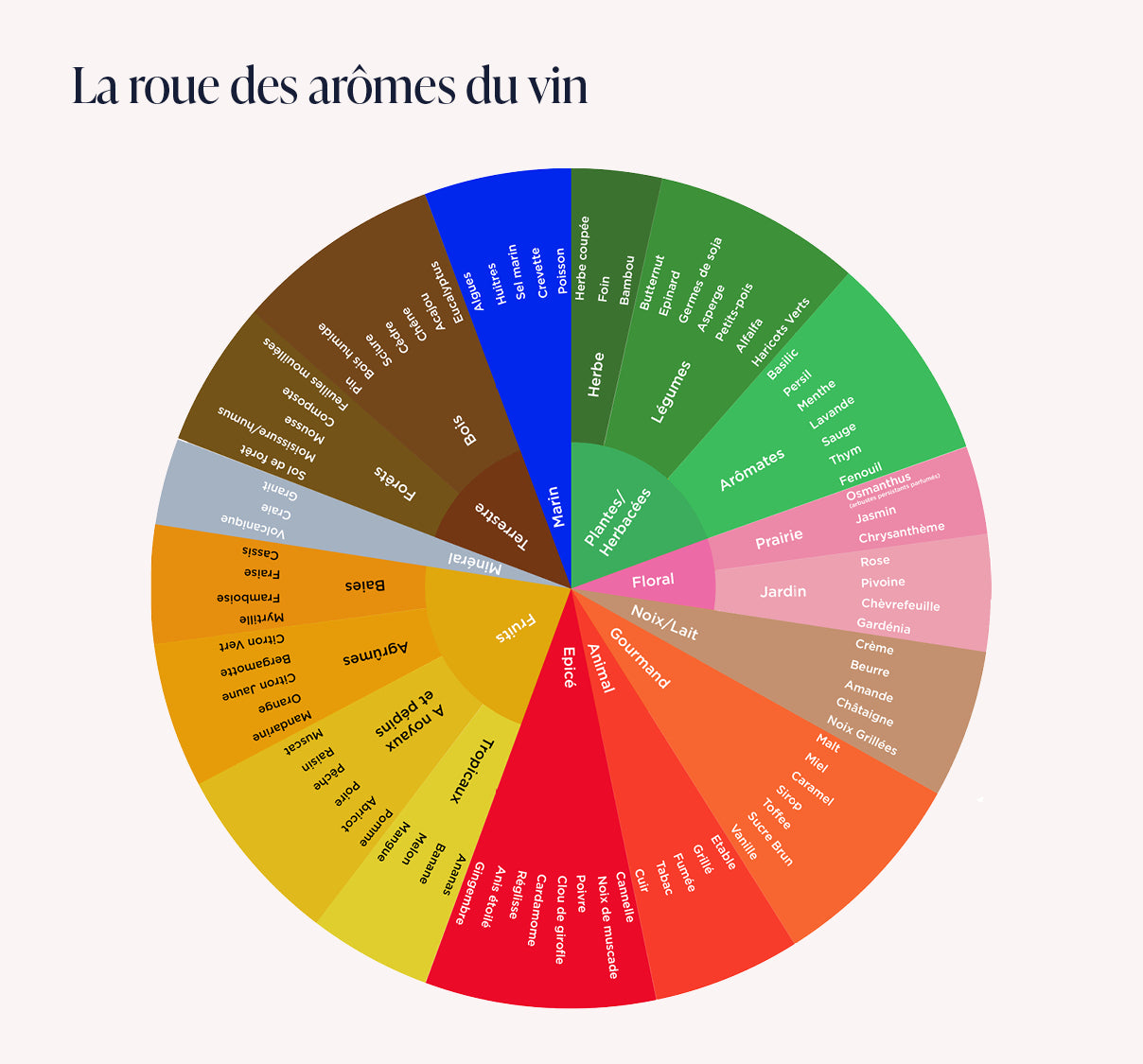Nose of the wine
The term "wine nose" is used to describe the olfactory imprint of wine: its aromas and the smells it gives off. It is during the 2ᵉ stage of tasting that a wine's nose is discovered. We use 3 categories to describe it: primary, secondary and tertiary aromas.
How do you describe the nose of a wine during a tasting?
Whether red, white, rosé or sparkling, all wines have a nose. Like the colour or the taste, the nose completes the identity card of a wine, already suggested on the bottle label.
There is no shortage of words in oenological vocabulary to describe the nose of a wine. Three categories are used to describe it:
- primary or varietal aromas. They express the wine's grape varieties and terroir.
- secondary or fermentation aromas They are related to the fermentation of wine (alcoholic, malolactic) and develop thanks to yeasts and other bacteria.
- tertiary aromas. They are linked to the specific ways in which the wine is matured and aged (for example, the use of oak barrels or concrete vats).
His classification of aromas is divided into several large families (floral, fruity, spicy aromatic, animal, empyreumatic, vegetal) from the roots of which stem an infinite number of more precise odours.

How do you appreciate a wine's nose?
The nose of a wine is an organoleptic characteristic that is not without flair!
When a wine is tasted and in contact with the air, its nose changes over time. The first nose refers to the moment when you smell the glass as soon as you open the bottle. It is also at this stage that we can notice a defect (corked wine).
The second nose comes when the wine has been aerated; the glass has been turned to release the bouquet, at which point the specific aromas can be perceived.
Keep a notebook or fill in a tasting grid. Keep it to document your progress and compare the red, white or rosé wines you've discovered. You need to build up your nose! L’analyse des odeurs et notes est complexe. You'll refine your perception over time and with each tasting.

Aveine's advice
Put your imagination to work by closing your eyes. Train your sense of smell with Le Nez du vin ®, a gift set created by Jean Lenoir featuring around fifty bottles of aromas.
